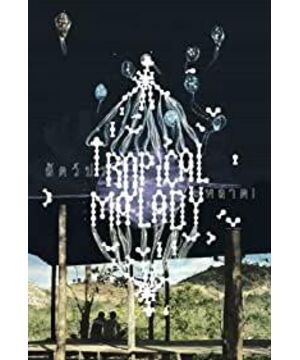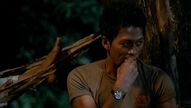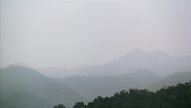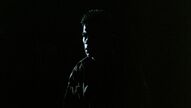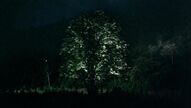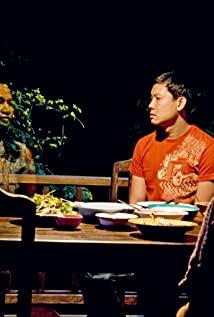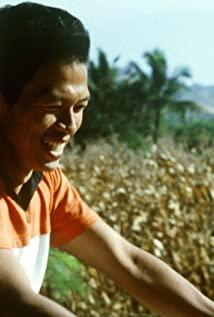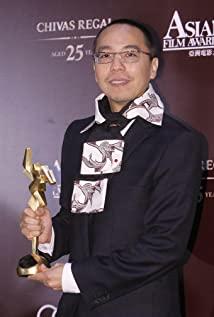1. The affinity between Apichatpong and Abbas (here refers specifically to the comparison with Abbas’s documentary)
a) Reuse of information
Apichatpong's short film "Letter to Uncle Boonmee" begins with two very similar narratives. These two passages are spoken by different voices. In the logic of Apichatpong's film as I understand it, it seems that The person who wrote to Uncle Boonmee also experienced past and present lives. In "Tropical Diseases", the same relationship is transformed by a fable in the first two paragraphs, the first one is the boy TONG and the soldier KENG, and the second one becomes the tiger spirit TONG and the soldier KENG. Likewise, this fable is told twice in the second half.
In the documentary "Wu", Abbas also used a two-stage structure. The first section is five seaside scenes, and the second section is in these five seaside scenes, describing how Abbas filmed these five scenes. process. While watching the first part, I was wondering how Abbas would make this kind of film, a combination of five beautiful seaside scenes under a fixed camera, anyway, in my eyes, this image language represents depravity, and even can Let the freshmen admire the beauty of each picture and give it a deep meaning. If this film only has the first half, it is a typical pretending fan. But it is Abbas after all, the latter part degrades and enriches the beauty of the former part, which makes beauty through structure.
b) Documentary + fiction
In his first feature film "Development at Noon", Apichatpong used the method of documentary + fiction, which is roughly the structure of recording fictional records, fictional records, fictional.... The fictional parts that are separated form a whole. . Almost the same method is used in the short film "Seven Emotions and Six Desires". Apichatpong is definitely a master of structure. He not only makes installations in the film screen, but also makes installations in the narrative structure.
In "Childhood One Two Three", Abbas added a fictitious paragraph in recording the lives of the local Africans. Several people observed the scene of moths flying on the lamp in the night, and then returned to the house. Because there was no electricity, A match is lit, one after the other, and the picture moves to the silhouette of a tree under a thunderstorm, and then it rains. What a surprise! The fictional part is obviously more forceful than the recorded part, but Abbas can make you feel that this part is very light, it stays on the beauty, and it feels better that the beauty is still in the whole. I think if today's documentaries are not organized with such a pursuit (around the recording object itself, it is easy to put the director in a passive state), then the best shot is a document.
Both Abbas and Abi are original authors, and this kind of affinity is only based on the observation of similarities in their works, and the inner logic of their respective works has no explorable connection. Abbas showed simpler emotions, while Apichatpong was more ambitious. At the same time, in terms of affinity, Abi can be compared with Cai Mingliang and Carlos Regadas.
2. Wong Kar Wai-style information transfer
Some of Abi's movie scenes sometimes appear in his other movies, but he never buries the clues so deeply like Wong Kar Wai, or he never planned it so much. Each of his films is independent. in its internal structure. Just this way reminds me of Wong Kar Wai haha.
a) The dialogue between a father and daughter about hearing aids in the clinic appeared in "Noon Development" and "Blessing" respectively. b) In the noon development, the last children told a fable about a tiger, which was conceived in 2004 It became "Tropical Diseases" c) The scene of teenagers playing football has appeared in almost every film of his, and the short film "The Phantom of Nabua" even focused on the scene of teenagers playing fireballs under lightning, and he played With his talent for making installations in movies, the light is looming, there are layered changes, so charming, so charming, so charming. The light and shadow of Apichatpong is the most moving film I have ever seen.
Square dance
d) Lame woman in "Uncle Boonmee Who Can Recall Past Lives" and "Fantasy Cemetery"
e) The hospital—the critical place connecting life and death The woods—the place where dreams happen
3 Contemporary artistry
Apichatpong is the most conscious director of contemporary art. He realizes the function of painting in the film through pictures and installations, and destroys the complete story structure through performance performances. Both his experimental and contemporary artistic talents are brought to life in short films, and they are used sparingly in feature films. The beauty he achieved in the film didn't bore me, it was quietly charming. Just like the fables in his films, it didn't fall on the story of human nature, but on the screen. (The themes about Buddhism, past and present lives, if not handled properly, will be annoying and make people feel like they are making a fool of themselves. He often feels that people escape from this strong and strong religious atmosphere.) To say good things and say bad things, he The endings of some of the films were treated as a group portrait in the world, which made me feel that the ending was abrupt, and there seemed to be a suspicion of changing from a private image to a public memory.
In terms of affinity, you can also compare Carlos Regadas, Cai Mingliang and Abi.
View more about Tropical Malady reviews


